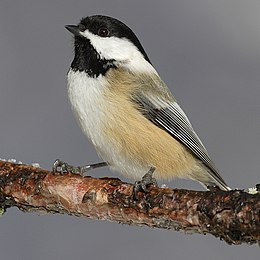Surveying for John Hosmer beyond pail-factory.
Hosmer says that seedling white birches do not grow larger than your arm, but cut them down and they spring up again and grow larger.
R. Hoar, I believe, bought that (formerly) pine lot of Loring’s which is now coming up shrub oak. Hosmer says that he will not see any decent wood there as long as he lives. H. says he had a lot of pine in Sudbury, which being cut, shrub oak came up. He cut and burned and raised rye, and the next year (it being surrounded by pine woods on three sides) a dense growth of pine sprang up.
As I have said before, it seems to me that the squirrels, etc., disperse the acorns, etc., amid the pines, they being a covert for them to lurk in, and when the pines are cut the fuzzy shrub oaks, etc., have the start. If you cut the shrub oak soon, probably pines or birches, maples, or other trees which have light seeds will spring next, because squirrels, etc., will not be likely to carry acorns into open land.
If the pine wood had been surrounded by white oak, probably that would have come up after the pine.
While running a line in the woods, close to the water, on the southwest side of Loring’s Pond, I observe a chickadee sitting quietly within a few feet. Suspecting a nest, I look and find it in a small hollow maple stump about five inches in diameter and two feet high. I look down about a foot and can just discern the eggs.
Breaking off a little, I manage to get my hand in and take out some eggs. There are seven, making by their number an unusual figure as they lay in the nest, a sort of egg rosette, a circle around with one (or more) in the middle.
The eggs are a perfect oval, five eighths inch long, white with small reddish-brown or rusty spots, especially about larger end, partly developed.
In the meanwhile the bird sits silent, though rather restless, within three feet. The nest is very thick and warm, of average depth, and made of the bluish-slate rabbit’s (?) fur.
The bird sat on the remaining eggs next day. I called off the boy in another direction that he might not find it.
Plucked a white lily pad with rounded sinus and lobes in Loring’s Pond, a variety.
Picked up a young wood tortoise, about an inch and a half long, but very orbicular. Its scales very distinct, and as usual very finely and distinctly sculptured, but there was no orange on it, only buff or leather-color on the sides beneath. So the one of similar rounded form and size and with distinct scales but faint yellow spots on back must have been a young spotted turtle, I think, after all.
H. D. Thoreau, Journal, June 3, 1856
That (formerly) pine lot of Loring’s which is now coming up shrub oak. . . .See April 28, 1856 ("George Hubbard remarked that if they were cut down oaks would spring up, and sure enough, looking across the road to where Loring’s white pines recently stood so densely, the ground was all covered with young oaks.”); May 13, 1856 ("I suspect that I can throw a little light on the fact that when a dense pine wood is cut down oaks, etc., may take its place. . . .There is a good example at Loring’s lot.”)




No comments:
Post a Comment